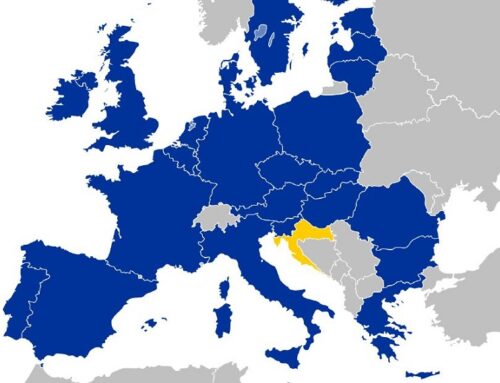Abstract
In 2018, the Nobel Peace Prize 2018 was awarded to Nadia Murad and Denis Mukwege for their efforts to end the use of sexualised violence in armed conflict. While wartime rape is as ancient as war itself, it has been a tolerated and trivialised crime. The International Criminal Tribunal for the former Yugoslavia was a game-changer in listing sexualised violence as a crime against humanity (ICTY), followed by the UNSCR 1820 in recognising its systematic use as a weapon of war with particular regards to ethnic cleansing. This formalises the recognition of ethnonationalist and gendered logics and symbolisms of sexualised violence in ethnicised armed conflicts. This case study uses theories, concepts and analyses from gender and cultural studies to examine the gendered narratives of ethnonationalism and sexualised violence. Further, it discusses whether the international criminalisation of sexualised violence extends or disrupts these narratives.
Introduction
The Bosnian war (1992-1995) has become an aphorism for mass rape and ethnic cleansing (Helms 2013:3). The largely Bosnian Serb and Serbian paramilitary and military forces that “terrorized, tortured, and murdered” (2013:53) Bošnjaks (Bosnian Muslims) in a systematic pattern (2013:26)became particularly known. [1]. By a large majority, women experienced gendered and sexualised violence such as gang rapes and forced pregnancies (2013:56). In particular award-winning films like Grbavica (2006), on war-rape and forced pregnancy and The Whistelblower (2010), the latter on sex-trafficking during the war, brought this to international public attention.
The Bosnian war was an “ethnicized war” (Helms 2013:4); not ethnically driven, as balkanist[2] notions might suggest, but exercised along ethnic lines. It is crucial to comprehend that not only ethnicity and religion but also “gender and sexuality were central to nationalist mobilisations and the violent breakup of Yugoslavia” (Helms 2013:51).
Gender practice is not merely reflective but constitutive of reality (Connell 2005:81). Discrimination based on gender and/or ethnicity is a form of Othering. This is a process of identity formation, constructing the superior Self by calling the inferior Other into existence (Spivak 1985:263-265, Jensen 2011:63-65). Through “structural domination, and a discursive or political suppression of the heterogeneity of the subject(s) in question” (Mohanty 1988:61), peoples are essentialised and therefore dehumanised. Such notions of difference are internalised, reproduced and institutionalised, and the resulting hierarchies and divisions become a naturalised reality (Spivak 1985:249-253). They are further solidified and (re)produced by violence (Helms 2013:27).
The accounts of virtually all wars contain references to and discussions of the rape [e.g. Ivo Andrić 2017:123], sexual enslavement, or sexual exploitation of women by not only individual or small groups of men, but by army high commands and as part of state-run national policies. (Nagel 2010:258)
Consequently, sexualised violence in the Bosnian war was not an arbitrary side event but followed gendered patterns and ethnonationalist narratives. This essay aspires to understand the ethnonationalist and gendered logic and symbolisms of sexualised violence and grasp the meaning of the formal, international criminalisation of sexualised violence in armed conflicts.
This paper argues that the gendered logics and ethnonationalist narratives are the discursive and ideological fundament on which these atrocities are exercised, made sense of and continue to shape the survivor’s realities during and after the war. Consequently, sexualised violence is also an effective weapon of war because the gendered logic is shared both by perpetrators and victims. The paper concludes by arguing that the criminalisation of sexualised violence was crucial in institutionalising women’s human rights, laws and verdicts. Further, the recognition of genocidal rapes is vital to categorise rape as a weapon of ethnic cleansing. However, these regimes potentially reproduce hegemonic patriarchal narratives and perpetuate nationalist ideologies.
Sexualised violence in the Bosnian war
Violence is “part of a system of domination” (Connell 2005:84), exercised to claim or assert power and superiority. It is contested how to conceptualise atrocities such as war rape.
Scholars criticise one-dimensional approaches (Helms 2013:4). These, for instance, simplify rape as a patriarchal phenomenon that violently extends women’s global oppression (Helms 2013:4, 61). This assumes a “universal patriarchal framework” (Mohanty 1988:63) and a universally shared female victimhood, obscuring the diversity of lived experiences (1988:62).
Such approaches also frequently privilege ethnicity over gender and hence simplifying both (2013:61). Mohanty argues that such approaches stem from the hegemonic gaze of “western eyes” (1988:61) under which conflicts not only happen but are subsequently framed and narrated. This implicit positioning of the West as the primary referent (1988:62) can result in balkanist images (Helms 2013:61), Othering those actually affected (Mohanty 1988:62) by the violence.
As mentioned, it is notions of gender and sexuality that inform collective meanings on power, nationalism, violence, history and ethnicity (Helms 2013:5, 34). Consequently, only the understanding of their interdependence (2013:64) allows us to, firstly, understand the “patriarchal logics of ethno-national superiority and territorial control” (2013:26). And secondly, how sexualised violence in ethnicised armed conflicts is exercised, experienced and narrated through idioms of ethnicity and nation (2013:27).
Realising and maintaining ‘the ethnic nation’ requires the ethnic opposite Other to define and defend against (Nagel 2010:247). Narratives of imagined identity and history to define unity and otherness (2010:248) require ethnic boundaries. In such narratives, the nation is often imagined as a family (2010:254). Through a re-traditionalist lens, the family is a place with assigned gendered, iconised, symbolic roles (2010:242, 244) based on the idea of an essentialised gender binary opposition (Helms 2013:34)[3].
Accordingly, a woman’s role is in the national domestic sphere (Helms 2013:34). Primarily, she is the biological producer of members of the ethnic group, hence of ethnic boundaries and becomes a symbolic signifier of ethnic/national differences. She is responsible for ideological and cultural transmission [and only potentially an active participant in politics, economy etc.] (Yuval-Davis & Anthias 1989:7-8). Women are discursively positioned “as passive symbols and powerless targets” (Helms 2013:26), epitomise the civilian (2013:33) and embody the victim-innocence (ibid.). They are only active in their capacity to reproduce and nurture future soldiers and mothers (2013:27, 52) and otherwise rendered to “objects of protection” (2013:34). Women “embody family and national honour; women’s shame is the family’s shame, the nation’s shame, the man’s shame” (Nagel 2010:254). Consequently, the purity of the ‘mothers of the nation’ “must be impeccable” (ibid.) because they are symbolical “bearers of masculine honour” (2010:256).
Men’s symbolic role is to act as “defenders of the nation’s territory and honour” (Helms 2013:34). Through the gendered, “normative lens of patriarchal heterosexuality” (ibid.), the ethnonational territory is feminised (ibid.). In turn, the female body is regarded as territory[4] to be conquered and defended (Nagel 2010:258) but also owned and controlled by men (Helms 2013:52, Connell 2005:83).
According to the gendered logic of armed violence (Helms 2013:34), this makes women a logical and “legitimate target of rape” (Nagel 2010:258, 242). ‘Conquering’ the female enemy body symbolically conquers the enemy nation (Helms 2013:58). Attacking the female enemy bodies attacks the enemy men symbolically. The men’s honour is “tied to their women’s sexuality, respectability and shame” (Nagel 2010:256).
The nation was cast as a woman in need of protection from ‘our’ men, while the rape of ‘their women’ signalled the defeat of ‘their’ men, as they had not been men enough to protect ‘their’ women. (Helms 2013:26)
To conclude, a women’s rape symbolically humiliates and diminishes national and male honour (2013:53, 57).
A women’s rape further symbolically violates and ‘pollutes’ the ethnic territory (Helms 2013:52). This makes rape and forced pregnancies a “highly effective weapon of ethnic cleansing” (2013:70). In case of forced pregnancies, women were detained until it was too late for an abortion (2013:56, 58) and sent back to their communities as “living reminders’” (2013:56) of shame and defeat. Women were meant to think to give birth to a Četnik (Serbian soldier), having been “impregnated with the enemy’s seed” (2013:58). This reflects the patriarchal logic of understanding women as “empty vessels of reproduction for male [ethnic] identities” (2013:58). Through pregnancy and social stigma, the trauma of rape is prolonged, and torture is continued (2013:70).
Militarised sexuality constructs “simultaneously over-sexed and under-sexed ‘enemy’ men (rapists and wimps)” (Nagel 2010:242). They are demonised and sexualised as rapists or emasculated as “sexual eunuchs, incapable of […] virility” (2010:257). While sexualised violence against women is both manipulated and silenced, male survivors’ existence is hardly acknowledged (Helms 2013:4).
The masculine role is idealised as militarised and aggressive (2013:34), so speaking about their trauma would further compromise the survivors’ masculinity (2013:57). Men were “beaten on the genitals and castrated, forced to perform oral sex or be penetrated anally, usually by foreign objects” (ibid.). This humiliation was “intensified by forcing male prisoners to sexually abuse each other, very often in father-son pairs” (ibid.) or forcing men to rape female relatives (ibid.).
Violence among men aims to claim or assert masculinity and strength by emasculating the enemy male Other (Connell 2005:83). The self-heterosexuality and masculinity get reaffirmed (Alsop et al. 2002:144) by forcing the enemy male Other into the feminised role of being sexually dominated (Helms 2013:52) and performing homosexualised acts (2013:57).
These notions derive from hegemonic masculinity, which defines masculine virtues as, for instance, “strength [and] sexual prowess with women” (Alsop et al. 2002:143). This cultural ideal is narrated as the normalised standard. Its unattainability creates a need to prove it in a process of constant reaffirmation (ibid.). Reversals, resistances and counter-narratives of gender equality and alternative masculinities threaten the legitimacy of patriarchy and male privilege[5] (Connell 2005:74, 85).
Patriarchy is ultimately an “ideology of supremacy” (2005:83), discursively ruling a system of female oppression and male dominance (2005:74). The reaffirmation of masculine superiority requires the degradation of femininity as its necessary Other (2005:68). Control and dominance over the female body and reproductive organs are exercised through violence (cf. Alsop et al. 2002:70). Hence rape is a control mechanism (2002:79). Moreover, the “privileging of heterosexuality is really about the male power over women” (Alsop et al. 2002:121), positioning compulsory heterosexuality at the core of hegemonic masculinity (Helms 2013:52, 58).
Sexualised violence against men performed in homosexualised acts then aims to emasculate because homosexual men are pre-subordinated, positioned “at the bottom of a gender hierarchy among men” (Connell 2005:78). The ferocity of homophobia is its misogynist substructure. Those associated with femininity form the derogatory bottom of masculinities – as the abhorrent embodiment of everything expelled from hegemonic masculinity, the superior human identity (ibid.).
To conclude, it is crucial to understand how “the culture and ideology of hegemonic masculinity go hand in hand with the culture and ideology of hegemonic nationalism” (Nagel 2010:244). After all, terms “like honour, patriotism, cowardice, bravery and duty are hard to distinguish as either nationalistic or masculinist” (2010:251-525). This transforms ethno-nationalist conflicts, in another dimension, into a venue for reaffirming hegemonic masculinity (251).
Criminalising sexualised violence in armed conflicts
While wartime rape is as ancient as war itself (Bergoffen 2013:109), it was an “ignored, tolerated or trivialised crime” (ibid.). This reflects rape culture[6]which imagines rape as a singular criminal act, arbitrary and rare, instead of systematic and naturalised gendered violence (Ferreday 2015:22). It narrates rape as something inevitable, and women and girls as sexualised potential victims (ibid.). Ultimately, the way rape is talked about or silenced exposes “society’s attitude to gender, sexuality, violence, property and family relationships” (2015:23).
In 2008, in an unprecedented way, the United Nations Security Council (UNSC) recognised in its Resolution (UNSCR) 1820 that “sexual violence can constitute a war crime, a crime against humanity, or a constitutive act with respect to genocide” (UNSCR 1820) and condemns its tactic and systematic use as a weapon (ibid., Bergoffen 2013:110). This reinforced the previously (2000) launched ‘Women, Peace and Security’ UNSCR 1325’s claim that women and girls suffered disproportionately in violent armed conflicts (UNSCR 1325). It is crucial to emphasise that these resolutions are human rights mandates (Coomaraswamy 2015:15).
The initial game-changer, however, was the International Criminal Tribunal for the former Yugoslavia (ICTY). It was a “watershed in international criminal law” (Sellers in ICTY) because it listed rape as a crime against humanity (McDonald in ICTY) and did not treat it as irrelevant, regrettable collateral damage or random acts (Bergoffen 2013:110). The development of further jurisprudence of sexual violence and prosecution of crimes (McDonald in ICTY) stressed that women’s rights were indeed “human rights recognised under international law” (Bergoffen 2013:110).
Moreover, the survivors’ voices were not only heard but validated and carried weight in a court (2013:109-110). The ICTY was not only “the first international tribunal to try a case exclusively for charges of sexual violence” (ICTY), but more “than 40% of ICTY cases included sexual violence” (ICTY). It included landmark cases such as the “first-ever trial for sexual violence against men” (ICTY landmark) and tried rape as a weapon of war and method of ethnic cleansing (ICTY landmark). Patricia Sellers argues that rape is
a weapon because it goes to the very psyche of the person, it goes to a physical sense of the person, it goes to a social sense of the person […] Persons have the experience of death yet are condemned to live. (ICTY)
According to Bergoffen, rape in its nature and intention aims to reduce a person to “a useless body in pain” (2013:115) and, therefore, ultimately dehumanising (2013:114). The ICTY and UNSCR 1820 unprecedentedly “identified the right to sexual self-determination, sexual integrity […] as the human right that was violated” (2013:110). Hence it was acknowledged that “the sensuous, desiring, sexed/gendered body is as constitutive of our humanity as other bodily dignities” (2013:111) – as humans, we are embodied, and as such we are vulnerable (ibid.).
The question, however, of whether the sexualised violence had been genocidal is one of the “most contentious debates” (Helms 2013:69) surrounding the ICTY. Arguably, there was an intention to “break the continuity of the nation as imagined as an endless, and inexplicably female-less line of male ancestors” (2013:57) through sex-selective killings of men and boys (2013:56), rape, forced pregnancies and genital mutilation (2013:70). The manipulation of the female body’s gendered and symbolic meanings as ethnic territory, signifier and reproducer symbolically destroys the ethnic group (Bergoffen 2013:115).
Helms acknowledges how meaningful the classification of genocide was for the survivors as an international acknowledgement of their pain. However, she questions the “myopic focus” (2013:69). Firstly, it bore the danger to diminish the incidental rapes of other survivors (2013:62). Secondly, according to Helms, some judge’s views were informed by balkanism, imagining women to passively, helplessly follow ethnonational patriarchal norms after the war (2013:71). Such narratives in post-conflict justice can reproduce “gendered codes [protector-protected] that enable genocidal rape to be an effective war time strategy” (2013:120) and unconsciously legitimise traditionalist-nationalist narratives according to which the perpetrators acted in the first place (Helms 2013:71).
Moreover, it reinforces ethnic divisions and victimisations, frames the rapes as purely ethnic and perpetuates the equation of women and nation (2013:63). Crimes are then framed as crimes against the nation, not against the women (2013:63). This narrative simultaneously constructs the female body as a source of abuse and shame to her, her nation and her man (Bergoffen 2013:121).
Nonetheless, Bergoffen argues that the ICTY and UNSCR 1820 were unequivocal about not only suggesting but demanding to position women as “subjects in their own rights” (2013:120). Sexual integrity must be situated as a matter of female dignity that must be respected, not male honour that must be protected (2013:120-121). At last, it is the abuse of her body that was successfully criminalised as an abuse of her human right and dignity (2013:120).
Conclusion
The histories of exploitation, torture and wartime rape reveal the centrality of embodiment to subjectivity and expose the role sexual differences play in social and political life. (Bergoffen 2013:121)
This paper illustrated the logics and ethnonationalist narratives that give meaning to the sexualised violence and shape the survivor’s realities during and after the war. These are closed narratives (Helms 2013:32). Hence the violence has to be understood within them.
Sexualised violence is an effective weapon of war because the gendered logic is shared both by perpetrators and victims. The criminalisation of sexualised violence was crucial in institutionalising women’s human rights, laws and verdicts. However, these regimes potentially reproduce hegemonic narratives that perpetuate nationalist ideologies and “collective victimisation” (Helms 2013:53). The recognition of genocidal rapes is vital to categorise rape as a weapon of ethnic cleansing. Nonetheless, it constitutes an “extension of patriarchal nationalist ideologies” (2013:64). The risk of its manipulation by masculinist nationalists only increases the importance of understanding the dimensions and mechanisms of power and violence and the responsibility of discursive deconstruction to institutionalise change effectively. As Spahič-Šiljak states
Setting legal norms is an essential first step, but implementation and acceptance of these norms entails a long-term process of changing certain customs and popular identities. (2013:183)
The award of the Nobel Peace Prize 2018 to Nadia Murad and Denis Mukwege “for their efforts to end the use of sexual violence as a weapon of war and armed conflict” (Nobel Peace Prize) is a sign of success in this regard. Indeed, the aspirations to understand, conceptualise and try sexualised violence, particularly against women, paid off a better understanding of violence and the logics of warfare.
Similar arguments are brought forward in the UNSCR 1325 and feminist foreign policy approaches in Sweden, Canada, Mexico and Germany. These embrace women and girls’ human rights as a cross-sectional topic and introduce a gendered perspective as an analytical tool in conflict-analysis, peacebuilding, and international cooperation (CFFP). It is important to emphasise that in theory (CFFP), those approaches do not substitute the myopic lens of militarised masculinity with a ‘female’ one. Instead, they aim to be intersectional and inclusive at heart, to decolonise paradigms and provide attention for male and LGBTQI+ survivors of sexualised violence.
Because even in this paper, the language of the gender binary was adopted; women were predominantly featured as victimised survivors of rape while men are, even though perpetrators, the only mentioned actors. It is crucial as scholars, too, to reflect on the reality of silencing, universalisms and patronisation that prevent agency and the recovery of the violated self-determination (cf. Alsop et al. 2002:23).
Works cited:
Alsop, Rachel and Annette Fitzsimons and Kathleen Lennon. Theorizing Gender. Cambridge: Polity Press, 2002.
Andrić, Ivo. Die Brücke über die Drina. Eine Chronik aus Visegrad. München: dtv, 2017. 6th edition.
Anthias, Nira Yuval-Davis and Floya. Woman-Nation-State. London: Macmillan, 1989.
Bergoffen, Debra. „Exploiting the dignity of the vulnerable body: rape as a weapon of war”.“ Staudigl, M. Phenomenologies of Violence . Leiden: Brill, 2013. 109-122.
CFFP Centre for Feminist Foreign Policy. https://centreforfeministforeignpolicy.org/feminist-foreign-policy?fbclid=IwAR1H87oqY_ULi0KntvzydvOLDKE5382UNs-kzrXjpWxMbiyGtCMwIr7Zo8g (28/02/20).
Connell, R. W. Masculinities. Cambridge: Polity Press, 2005. Second Edition.
Coomaraswamy, Radhika. Preventing Conflict, Transforming Justice, Securing the Peace. A Global Study on the Implementation of United Nations Security Council Resolution 1325. UN Women, 2015.
De Beauvoir, Simone. The Second Sex. Extracted Edition edited by Martine Reid, London: Vintage Classics, 2015.
Ferreday, Deborah. „Game of Thrones, Rape Culture and Feminist Fandom.“ Australian Feminist Studies 30:83 25. April 2015: 21-36.
Grbavica. Jasmila Žbanić. 2006. DVD.
Helms, Elissa. Innocence and Victimhood. Gender, Nation and WomenÄs Activism in Postwar Bosnia and Herzegovina. . Madison: University of Wisconsin Press, 2013. Critical Human Rights Edition.
ICTY The ICTY and crimes of sexual violence. 10. 02 2011. https://www.youtube.com/watch?v=PPd4q06juIc&feature=youtu.be (28/02/20).
ICTY Crimes of Sexual Violence – Landmark Cases. https://www.icty.org/en/features/crimes-sexual-violence/landmark-cases (28/02/20).
Jensen, Sune Qvotrup, “Othering, identity formation and agency.” Quantitative Studies, 2(2), 2011:63-78.
Mohanty, Chahandra. „Under Western Eyes: Feminist Scholarship and Colonial Discourses.“ Feminist Review No.30 1988: 61-88.
Nagel, Joane. „Masculinity and nationalism: gender and sexuality in the making of nations.“ Ethnic and Racial Studies 21:2 02. Dec 2010: 242-269.
Nobel Peace Prize 2018. https://www.nobelprize.org/prizes/peace/2018/summary/
United Nations Security Council Resolution 1325.2000. http://unscr.com/en/resolutions/1325 (28/02/20).
United Nations Security Council Resolution 1820 .2008. http://unscr.com/en/resolutions/1820 (28/02/20).
Spahič-Šiljak, Zilka. „Do It and Name It: Feminist Theology and Peace Building in Bosnia and Herzegovina.“ Journal of Feminist Studies in Religion Vol.29 No. 2 2013: 176-184.
Spivak, Gayatri Chakravorty. „The Rani of Simur: an Essay in Reading the Archives.“ History and Theory Vol 24, No.3 Oct 1985: 247-272.
The Whistleblower. Larysa Kondracki. 2010. https://www.imdb.com/title/tt0896872/ (10.03.2021)
Todorová, Maria. Imagining the Balkans. Oxford: Oxford University Press , 2009.
——–
[1] Despite a focus on this popular case of ‘Serb perpetrator’ and ‘Bošnjak victim’ due to the Srebrenica genocide, this paper does not intend to obscure the fact ethnicised and sexualised violence was both exercised and suffered by all ethnic communities during the war.
[2] Todorová argues that the Balkans are invented and imagined as tribal (2009:187). “As in the case of the Orient, the Balkans have served as a repository of negative characteristics against which a positive and self-congratulatory image of the ‘European’ and the ‘West’ has been constructed. […] the Balkans are left in Europe’s thrall, anticivilization, alter ego, the dark side within” (2009:188).
[3] It imagines the superior masculine Self as “the positive and the neuter […] because it is understood that being a man is no particularity; a man is right by virtue of being a man; it is the woman who is in the wrong” (de Beauvoir 2015:6). He “is the Subject, he is the Absolute. She is the Other” (2015:7).
[4] This ideology is represented in the Britannia or Germania, symbolising the nation/territory.
[5] Even those who cannot meet the ideal benefit from its hegemonic position (Connell 2005:79). This understands men as an interest group concerned with defending male privilege (2005:82, Nagel 2010:258).
[6] Rape culture is a “complex social phenomenon […], [a] product of gendered, raced and classed social relations that are central to patriarchal heterosexist culture” (Ferreday 2015:22).




